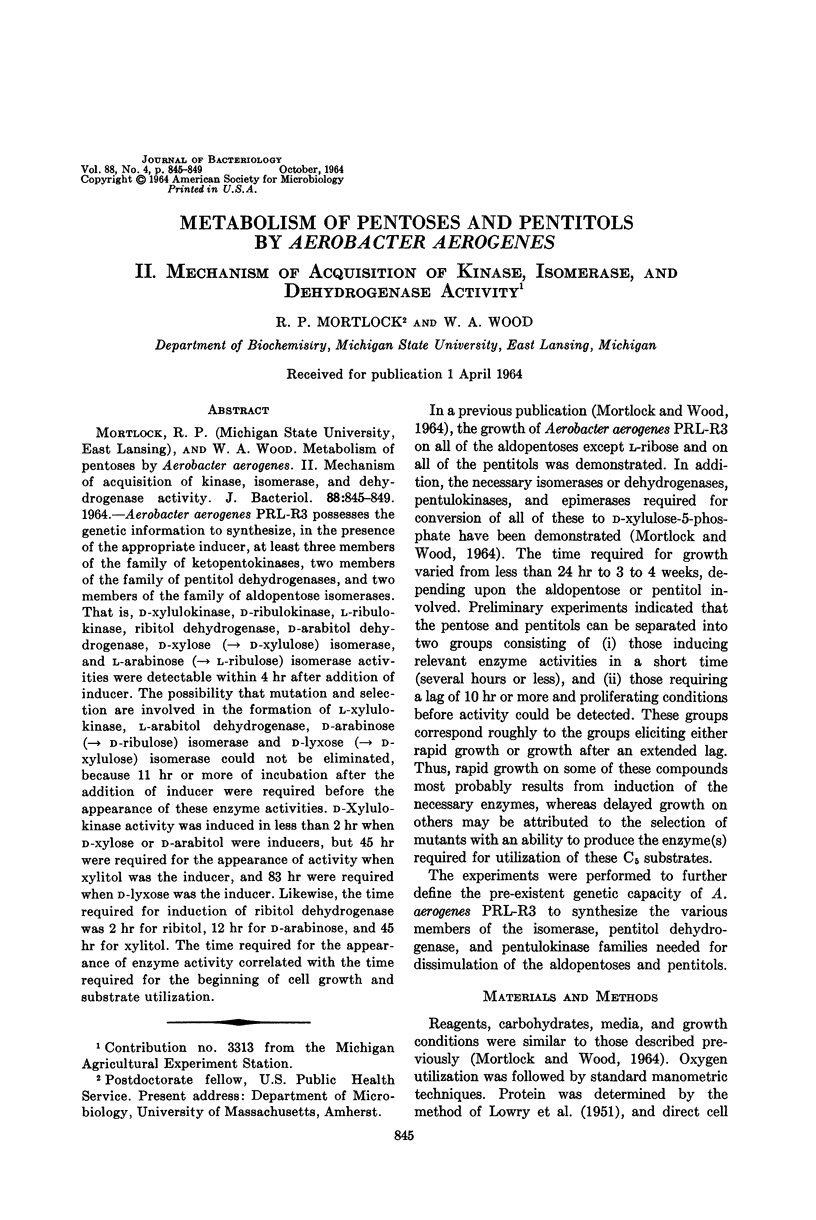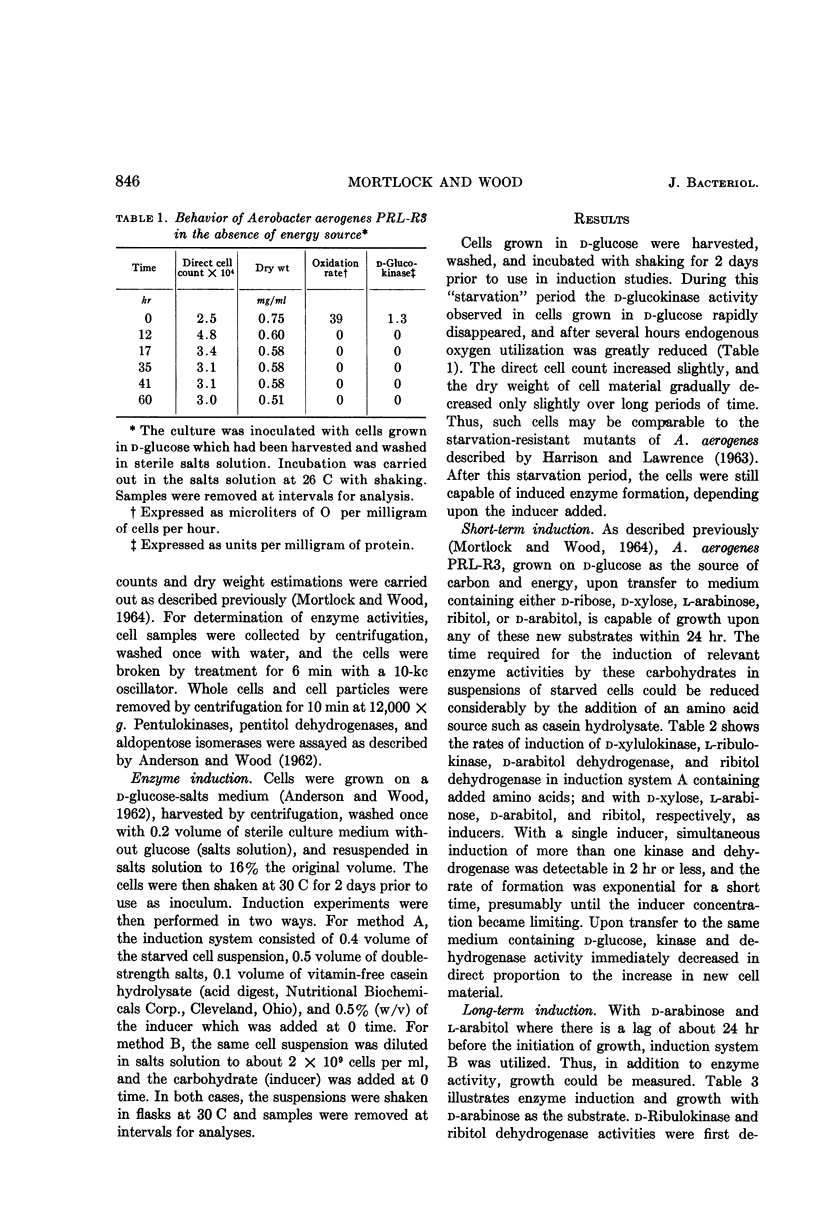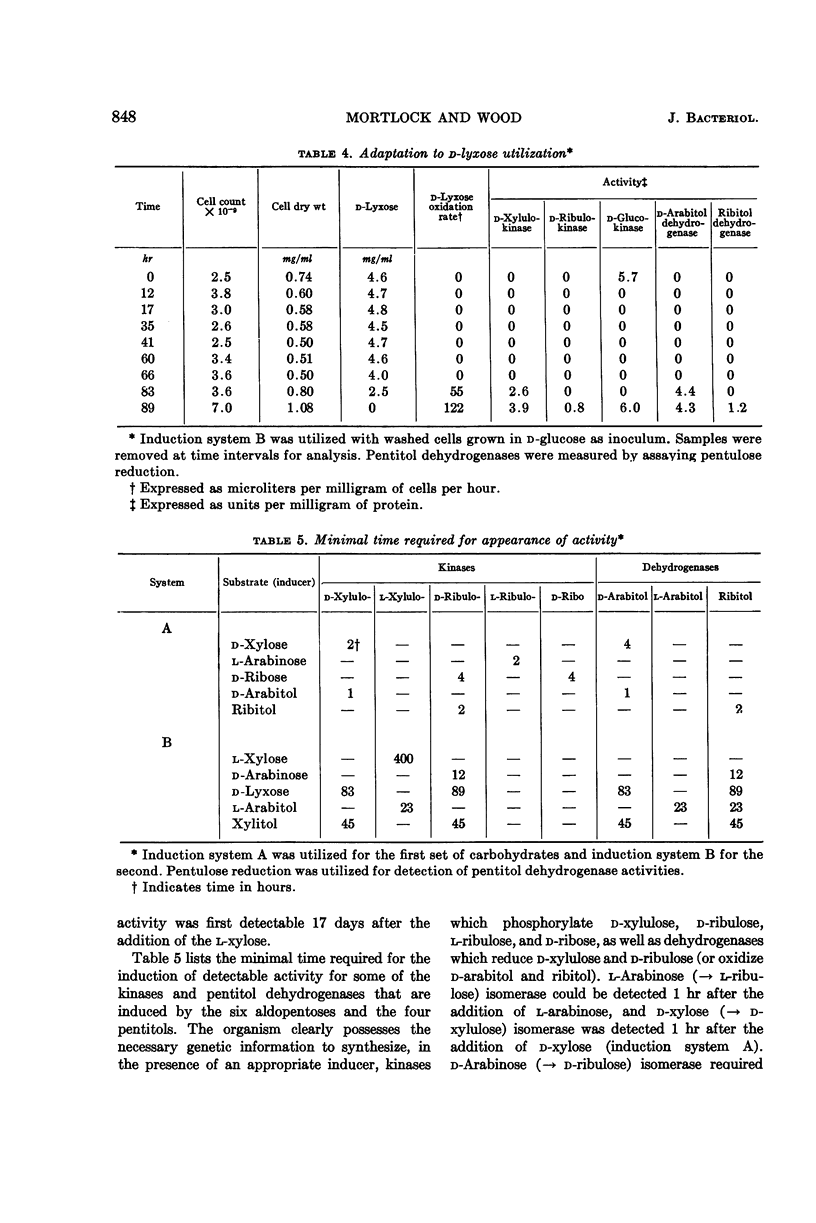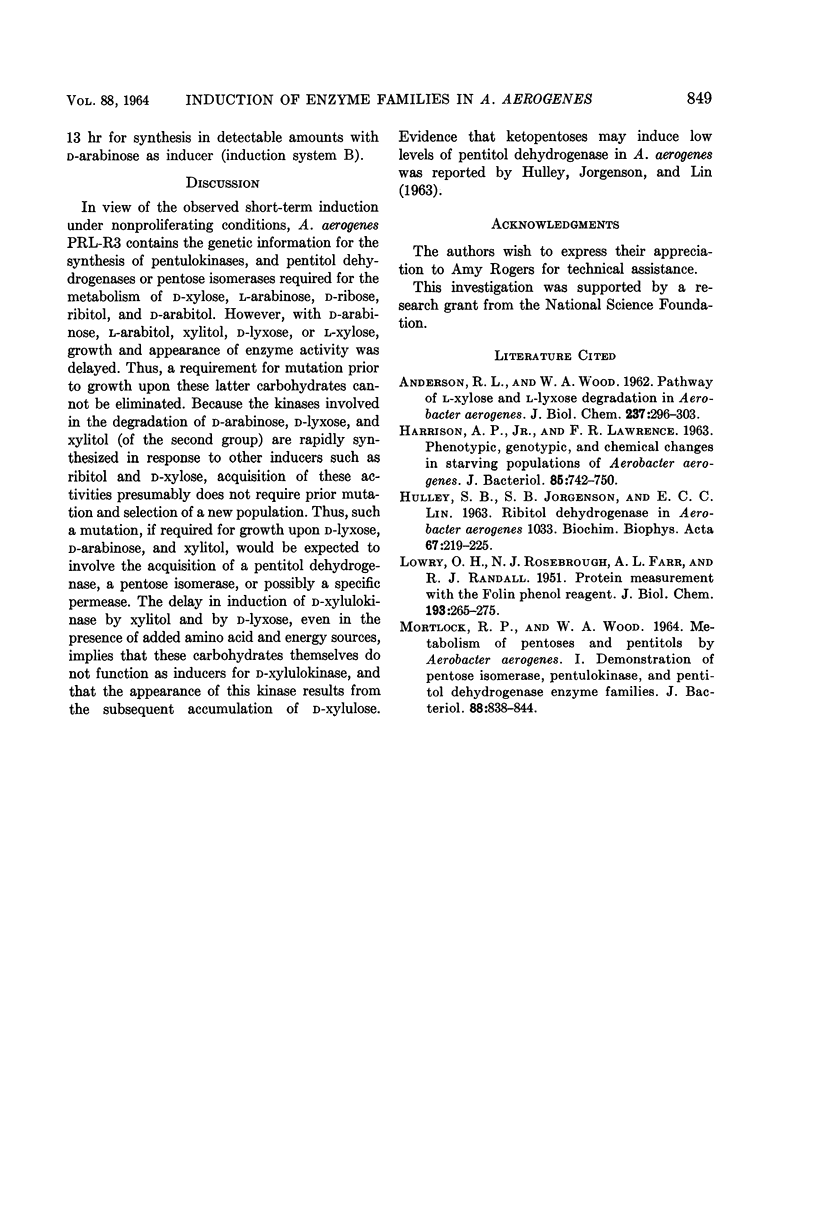Abstract
Mortlock, R. P. (Michigan State University, East Lansing), and W. A. Wood. Metabolism of pentoses by Aerobacter aerogenes. II. Mechanism of acquisition of kinase, isomerase, and dehydrogenase activity. J. Bacteriol. 88:845–849. 1964.—Aerobacter aerogenes PRL-R3 possesses the genetic information to synthesize, in the presence of the appropriate inducer, at least three members of the family of ketopentokinases, two members of the family of pentitol dehydrogenases, and two members of the family of aldopentose isomerases. That is, d-xylulokinase, d-ribulokinase, l-ribulokinase, ribitol dehydrogenase, d-arabitol dehydrogenase, d-xylose (→ d-xylulose) isomerase, and l-arabinose (→ l-ribulose) isomerase activities were detectable within 4 hr after addition of inducer. The possibility that mutation and selection are involved in the formation of l-xylulokinase, l-arabitol dehydrogenase, d-arabinose (→ d-ribulose) isomerase and d-lyxose (→ d-xylulose) isomerase could not be eliminated, because 11 hr or more of incubation after the addition of inducer were required before the appearance of these enzyme activities. d-Xylulokinase activity was induced in less than 2 hr when d-xylose or d-arabitol were inducers, but 45 hr were required for the appearance of activity when xylitol was the inducer, and 83 hr were required when d-lyxose was the inducer. Likewise, the time required for induction of ribitol dehydrogenase was 2 hr for ribitol, 12 hr for d-arabinose, and 45 hr for xylitol. The time required for the appearance of enzyme activity correlated with the time required for the beginning of cell growth and substrate utilization.
Full text
PDF




Selected References
These references are in PubMed. This may not be the complete list of references from this article.
- ANDERSON R. L., WOOD W. A. Pathway of L-xylose and L-lyxose degradation in Aerobacter aerogenes. J Biol Chem. 1962 Feb;237:296–303. [PubMed] [Google Scholar]
- HARRISON A. P., Jr, LAWRENCE F. R. PHENOTYPIC, GENOTYPIC, AND CHEMICAL CHANGES IN STARVING POPULATIONS OF AEROBACTER AEROGENES. J Bacteriol. 1963 Apr;85:742–750. doi: 10.1128/jb.85.4.742-750.1963. [DOI] [PMC free article] [PubMed] [Google Scholar]
- HULLEY S. B., JORGENSEN S. B., LIN E. C. Ribitol dehydrogenase in Aerobacter aerogenes 1033. Biochim Biophys Acta. 1963 Feb 12;67:219–225. doi: 10.1016/0006-3002(63)91819-5. [DOI] [PubMed] [Google Scholar]
- LOWRY O. H., ROSEBROUGH N. J., FARR A. L., RANDALL R. J. Protein measurement with the Folin phenol reagent. J Biol Chem. 1951 Nov;193(1):265–275. [PubMed] [Google Scholar]
- MORTLOCK R. P., WOOD W. A. METABOLISM OF PENTOSES AND PENTITOLS BY AEROBACTER AEROGENES. I. DEMONSTRATION OF PENTOSE ISOMERASE, PENTULOKINASE, AND PENTITOL DEHYDROGENASE ENZYME FAMILIES. J Bacteriol. 1964 Oct;88:838–844. doi: 10.1128/jb.88.4.838-844.1964. [DOI] [PMC free article] [PubMed] [Google Scholar]


